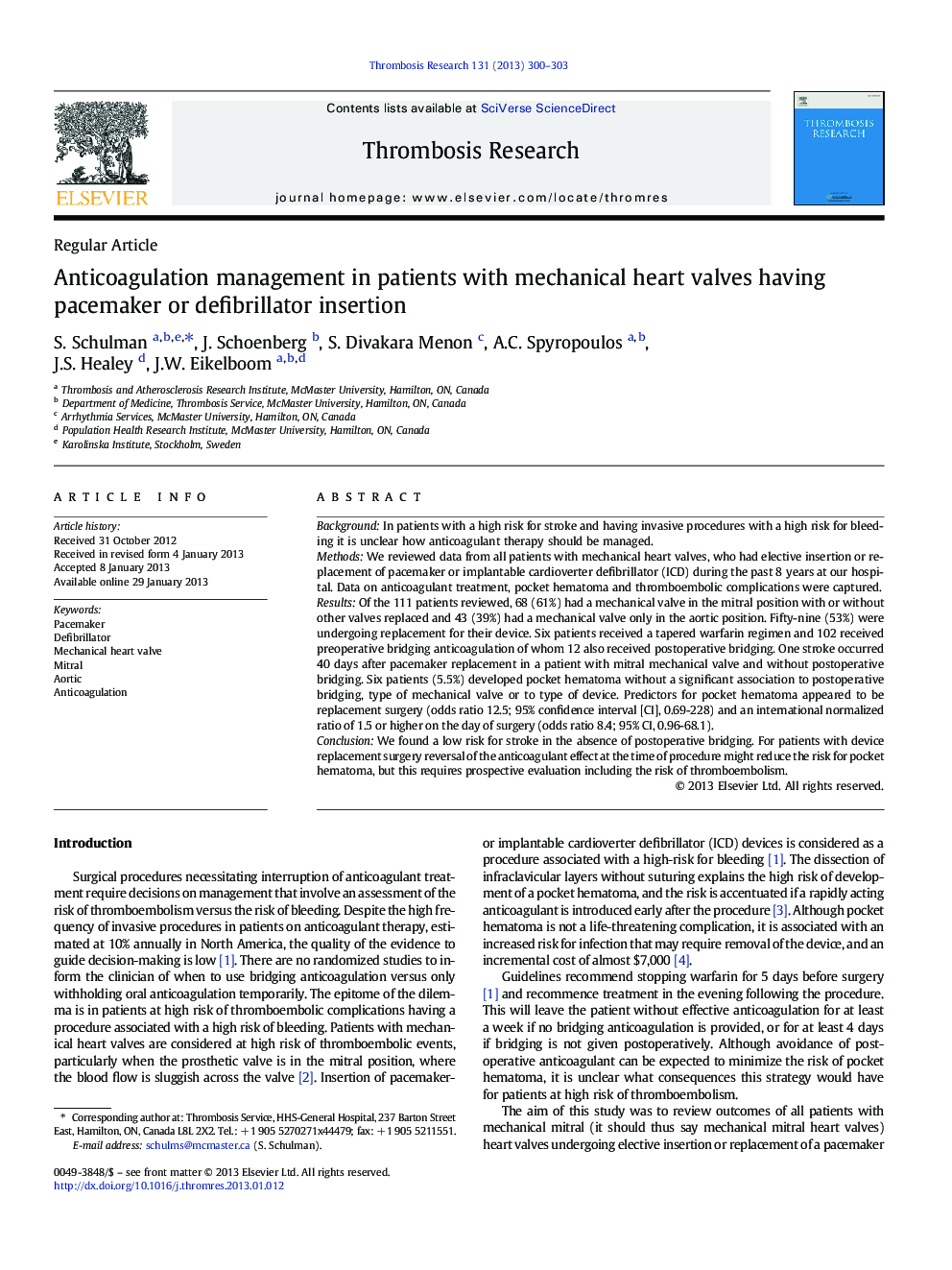| کد مقاله | کد نشریه | سال انتشار | مقاله انگلیسی | نسخه تمام متن |
|---|---|---|---|---|
| 3027212 | 1182954 | 2013 | 4 صفحه PDF | دانلود رایگان |

BackgroundIn patients with a high risk for stroke and having invasive procedures with a high risk for bleeding it is unclear how anticoagulant therapy should be managed.MethodsWe reviewed data from all patients with mechanical heart valves, who had elective insertion or replacement of pacemaker or implantable cardioverter defibrillator (ICD) during the past 8 years at our hospital. Data on anticoagulant treatment, pocket hematoma and thromboembolic complications were captured.ResultsOf the 111 patients reviewed, 68 (61%) had a mechanical valve in the mitral position with or without other valves replaced and 43 (39%) had a mechanical valve only in the aortic position. Fifty-nine (53%) were undergoing replacement for their device. Six patients received a tapered warfarin regimen and 102 received preoperative bridging anticoagulation of whom 12 also received postoperative bridging. One stroke occurred 40 days after pacemaker replacement in a patient with mitral mechanical valve and without postoperative bridging. Six patients (5.5%) developed pocket hematoma without a significant association to postoperative bridging, type of mechanical valve or to type of device. Predictors for pocket hematoma appeared to be replacement surgery (odds ratio 12.5; 95% confidence interval [CI], 0.69-228) and an international normalized ratio of 1.5 or higher on the day of surgery (odds ratio 8.4; 95% CI, 0.96-68.1).ConclusionWe found a low risk for stroke in the absence of postoperative bridging. For patients with device replacement surgery reversal of the anticoagulant effect at the time of procedure might reduce the risk for pocket hematoma, but this requires prospective evaluation including the risk of thromboembolism.
Journal: Thrombosis Research - Volume 131, Issue 4, April 2013, Pages 300–303